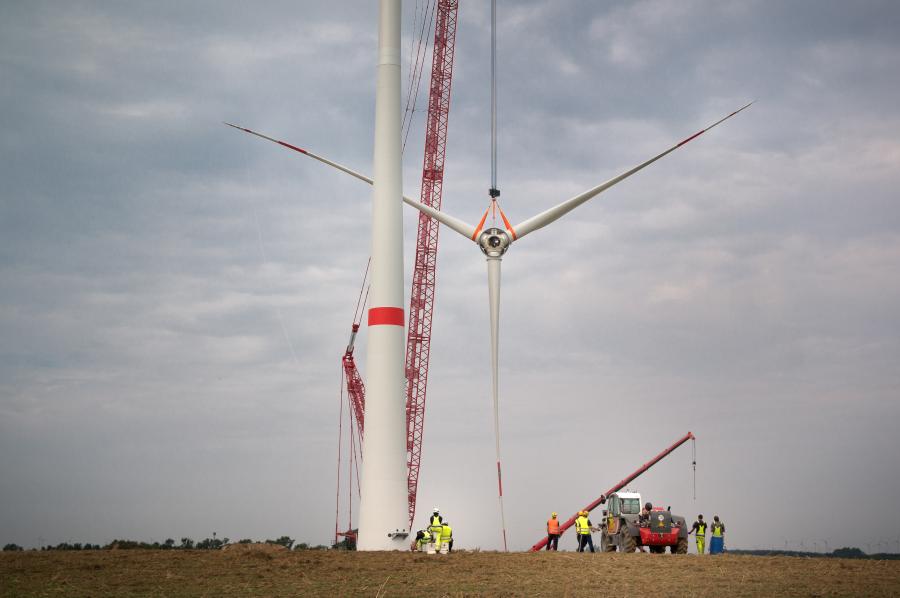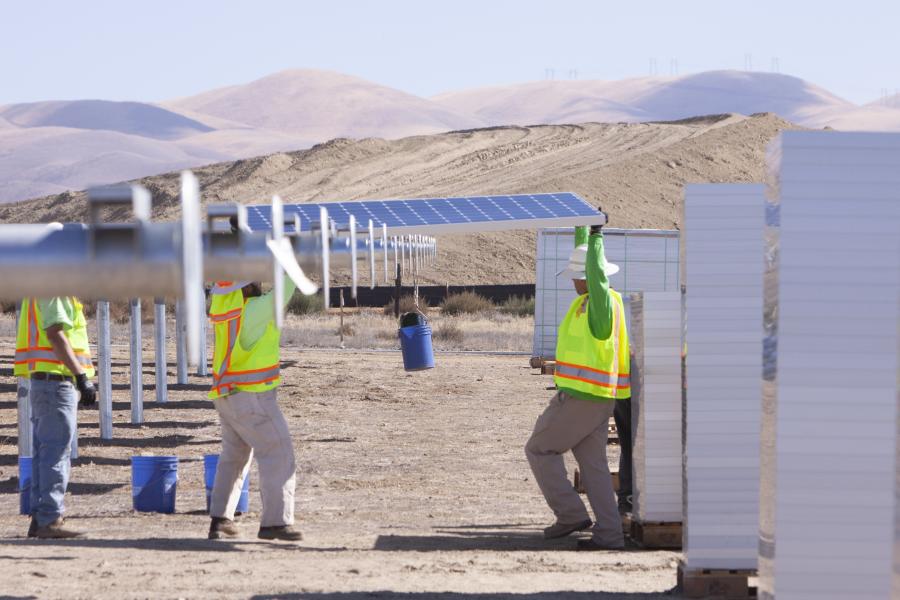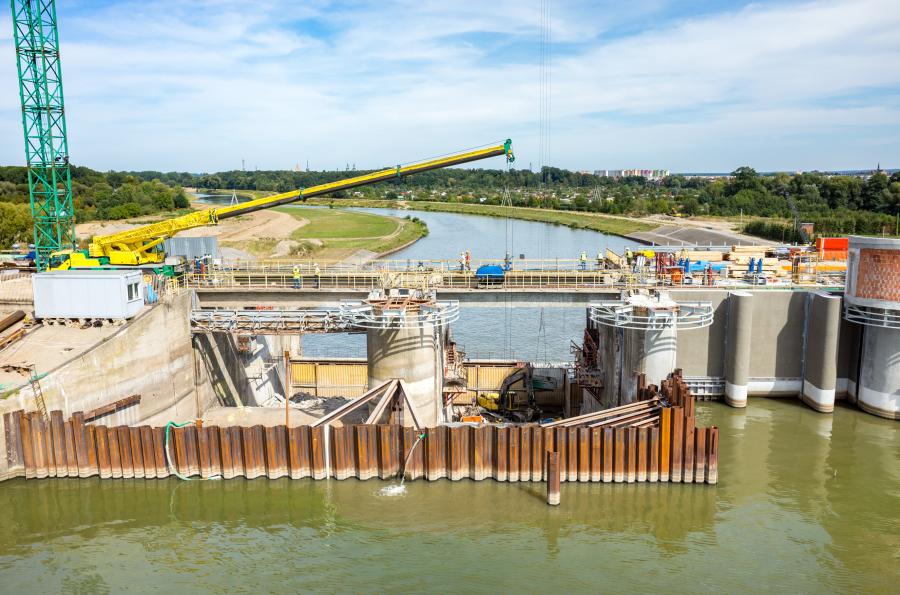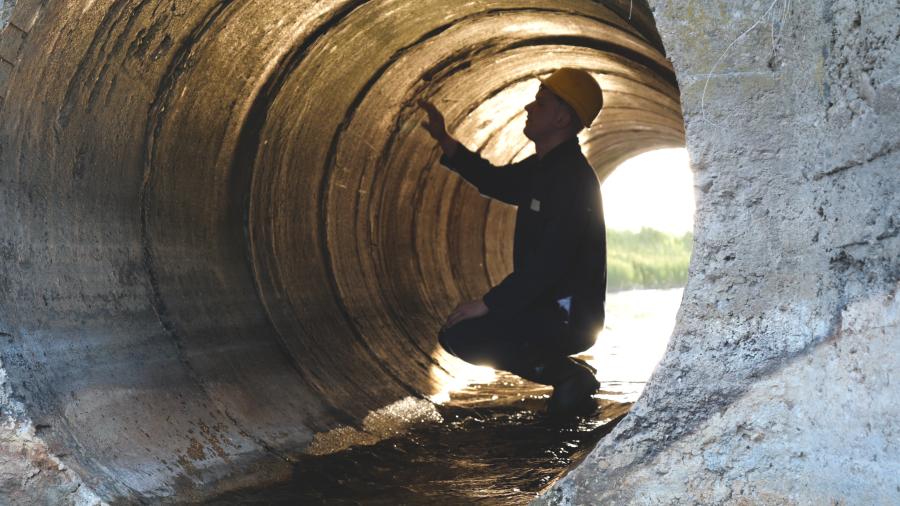Solar, hydro and wind generation accounted for all the growth in power generation during 2020, while coal, natural gas and nuclear output declined.
The outlook for energy-related construction is a positive one. The renewable energy sector is preparing for a boom over the next five years and the fossil fuels industry is fighting hard to hold its place in the battle for power. That all bodes well for the construction industry, which will greatly benefit from the expansion, if longstanding pricing and materials acquisition challenges can be overcome.
Noting 2021 has been another banner year for wind and solar construction, the International Energy Agency (IEA) is forecasting a five-year sector boom even in the face of supply chain issues, materials costs and COVID-19 restrictions.
According to MIT Technology Review, renewables will make up 95 percent of overall capacity growth in the power sector over the next five years.
Demand for energy is growing in general, so fossil fuels cannot be counted out of the mix.
"It still remains to be seen how quickly carbon-free sources will become the dominant source of electricity globally and begin rapidly supplanting coal, natural gas and other polluting sources," according to MIT.
The decline in electricity generation from coal has opened up opportunities for other power sources. BloombergNEF reports that solar, hydro and wind generation accounted for all the growth in power generation last year. This while coal, natural gas and nuclear output declined.
Citing improved economics, increased national emissions reduction commitments and domestic policy, the IEA revised its renewables estimates for 2026 upward more than 40 percent higher than 2020 numbers.
"China, Europe, the U.S. and India will account for nearly 80 percent of the added renewable capacity," reported the IEA.
To meet the global 2050 goal of a net-zero energy sector build, average annual renewables additions will need to double over the IEA's five-year expectations. More aggressive climate policies and goals; cheaper carbon-free sources; and fast-happening technologies to balance out fluctuating renewables on the grid will all be necessary, said MIT.
The industry must overcome several "policy uncertainties and implementation challenges," noted the energy agency. Everything from permitting and financing to grid integration and social acceptance could create challenges.
"Current increases in commodity prices have put upward pressure on investment costs, while the availability of raw materials and rising electricity prices in some markets pose additional challenges," said the IEA, adding it expects those challenges will not be impossible to overcome.
Feds Are Here to Help
The Infrastructure Investment and Jobs Act (IIJA) includes major programs that bode well for construction contractors working in the energy sector, from support for electrification of the transportation system to building out the transmission grid and renewable power.
"The IIJA creates major new investments programs, touching nearly every aspect of the energy industry," wrote Beveridge & Diamond environmental law firm.
"Companies should pay close attention to these programs, both as a potential source of grants or other financial support, and for the systemic impacts programs of this size are likely to have on the industry."
Contractors should take notice, too.
"The IIJA's energy and climate-related provisions are numerous, and the details for implementation will be important going forward," wrote the law firm in detailing those provisions.
The bill appropriates $7.5 billion to support construction of electric vehicle charging infrastructure, hydrogen and natural gas fueling infrastructure and propane fueling infrastructure for medium- and heavy-duty trucks.
The IIJA aims to address climate change by improving infrastructure resiliency or mitigating the adverse effects of climate change. The act promotes construction of new electric transmission and easing regulatory barriers to transmission development, earmarking $65 billion for these purposes.
Specific provisions include a $5 billion grant program to support hardening the grid against extreme weather, wildfires and similar hazards. Grants may be used for a variety of measures, such as undergrounding or relocating electric lines and constructing microgrids and electricity storage systems.
The legislation clarifies that federal disaster assistance can be used to fund repairs to wildfire-damaged electric systems and that repairs may include undergrounding or adding fire-resistant equipment, according to Beveridge & Diamond. It also authorizes the construction of transmission facilities to increase the transfer of renewable power between Canada and the United States under the Columbia River Treaty.
The IIJA includes a grant program to support utilization of captured carbon in new products, loan guarantees and grants to expand pipelines that transport captured carbon to sites where it can be utilized, a new program aimed at supporting large-scale commercialization of carbon capture technologies, and amendments to the permitting process for carbon sequestration projects.
The legislation expands federal support for the use of hydrogen as an energy source, said Beveridge & Diamond. It also includes federal support for developing at least four clean hydrogen hubs that would promote new technology and commercialization of that technology.
Hydroelectric power, chiefly the installation of new generation on existing dams or improving the safety and environmental performance of existing dams, is included in the legislation.
The new bill revives a DOE program that encourages new small hydro generation on existing dams and conduits such as irrigation canals. It includes the addition of new generators to an existing dam or conduit or the addition of a small generator to a FERC-licensed dams in areas that lacks grid access, has frequent outages or high electricity prices.
The new bill extends an existing DOE program providing incentives for improvements to hydro facilities that increase their efficiency by at least 3 percent.
Incentives for improvements to existing hydroelectric facilities that would support capital improvements also are included.
Programs designed to reduce the economic effects of shuttered and abandoned fossil fuel facilities are a part of the IIJA. One specifically targets demonstration projects for construction of renewable energy facilities on abandoned mine sites.
In addition to expanded energy construction included in the IIJA, President Biden's proposed federal tax credits extension in the Build Back Better bill and national and corporate efforts to meet EU emissions targets are factors in the IEA forecast revision.
The law firm of McDermott Will & Emery (MWE) noted that with the federal government's procurement power the executive order to meet the 2050 carbon-neutral target could "transform clean energy markets while achieving ambitious climate goals."
Those goals include 100 percent carbon pollution-free electricity by 2030; zero-emission vehicle acquisitions by 2035; net zero emissions from federal procurement no later than 2050; and a similar building portfolio by 2045.
"The executive order and the administration's procurement plans are a potential bonanza for clean energy and electric vehicle companies," said MWE. "The federal government buys $650 billion in goods and services annually in addition to a real estate portfolio of more than 300,000 buildings and a fleet of more than 600,000 cars and trucks."
To achieve the 100-percent carbon pollution-free electricity goal, MWE said the federal government will buy power directly from utilities, enter into power purchase agreements with generators and develop onsite generation on federal real property.
"Meeting this goal will spur the development of more than 10 gigawatts of new clean electricity production by 2030."
The executive order directs that at least 50 percent of that power must come from locally sourced 24/7 carbon pollution-free electricity. The sourced electricity must match actual consumption on an hourly basis and be produced within the same regional grid where the energy is consumed.
"The McDermott energy team has seen such calls for around-the-clock clean power supply grow in recent years — particularly from large corporate energy buyers — including a number of leading technology companies. Those same technology companies have urged the federal government to procure clean energy on a 24/7 basis," said the law firm.
Though a boost in construction work natural follows all of this policy implementation, it comes with business operations challenges for construction contractors.
According to MWE, the fed will expand its consideration of embodied emissions in construction materials and launch a Buy Clean policy for acquisition of materials with lower embodied emissions.
The federal government also will require its major contractors to publicly report their greenhouse gas emissions, plans to reduce emissions and risks faced by climate change, said MWE.
"Based on the prior experience of McDermott's Energy and Project Finance Practice Group … the executive order and subsequent implementation could be transformative for the industry," MWE said of the energy sector. "The federal government is the largest landowner and energy consumer in the United States." CEG
Today's top stories























